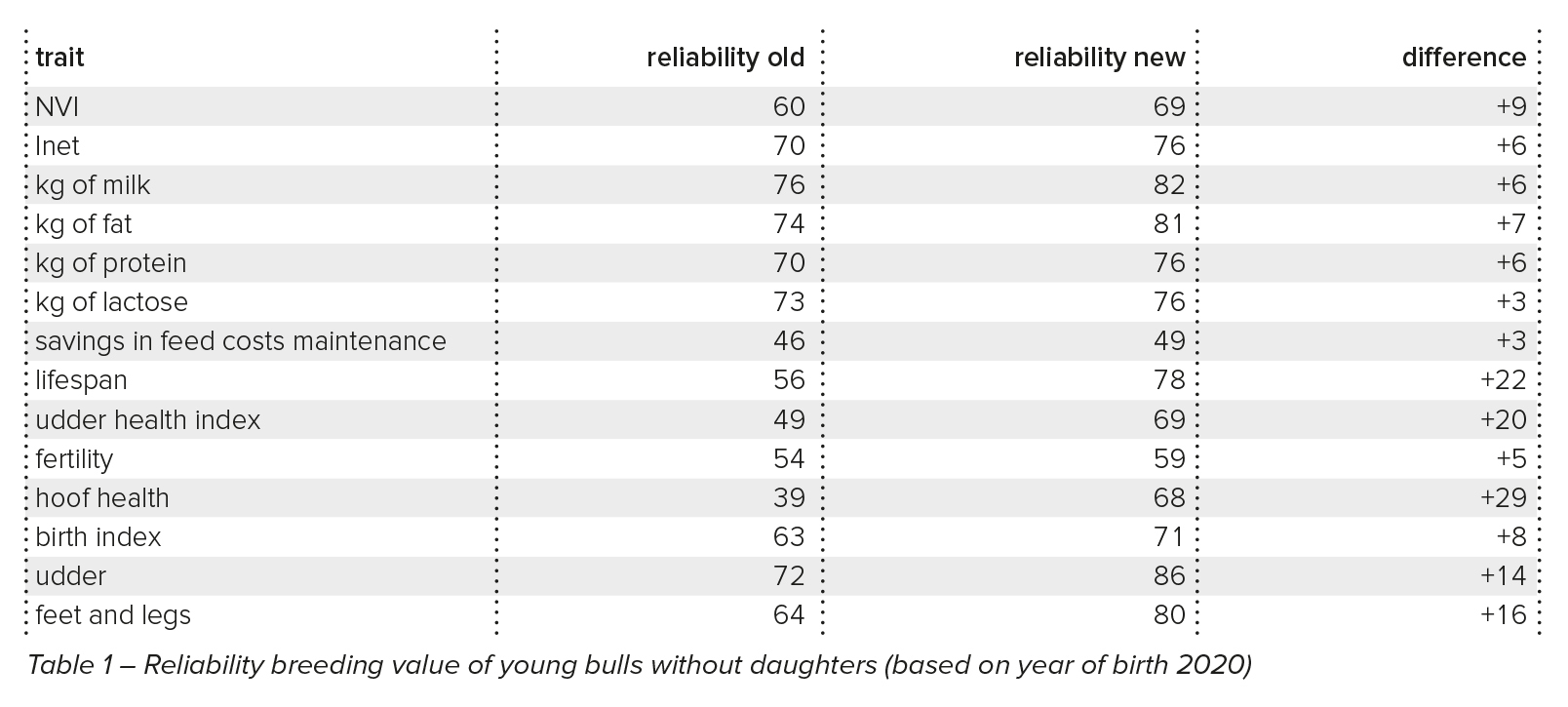The single-step method makes better and more efficient use of all available information. Moreover, the number of markers has been further expanded. The development of new software and the increased processing power of computers has made this possible.
The single-step method meets all of Interbull’s requirements. This was also extensively tested by comparing the daughter breeding values achieved of a large number of bulls with the genomic breeding values calculated using the new method. This revealed that the new genomic breeding values were closer to the daughter breeding values achieved than the genomic breeding values calculated using the old method.


